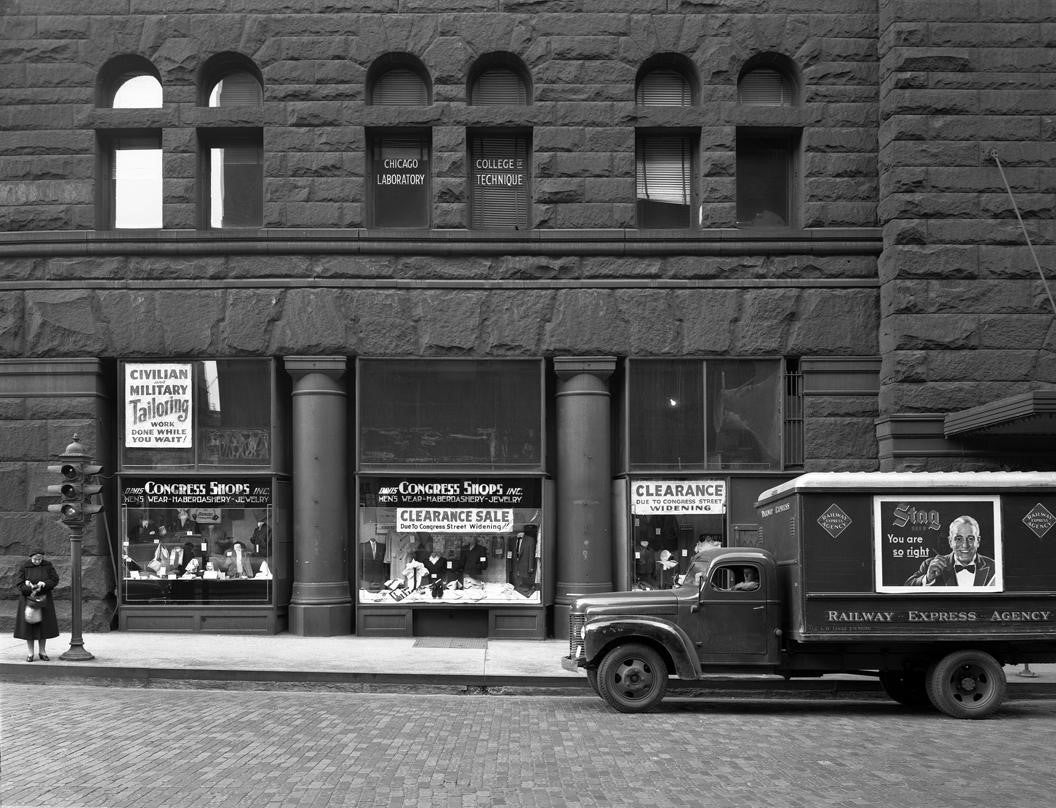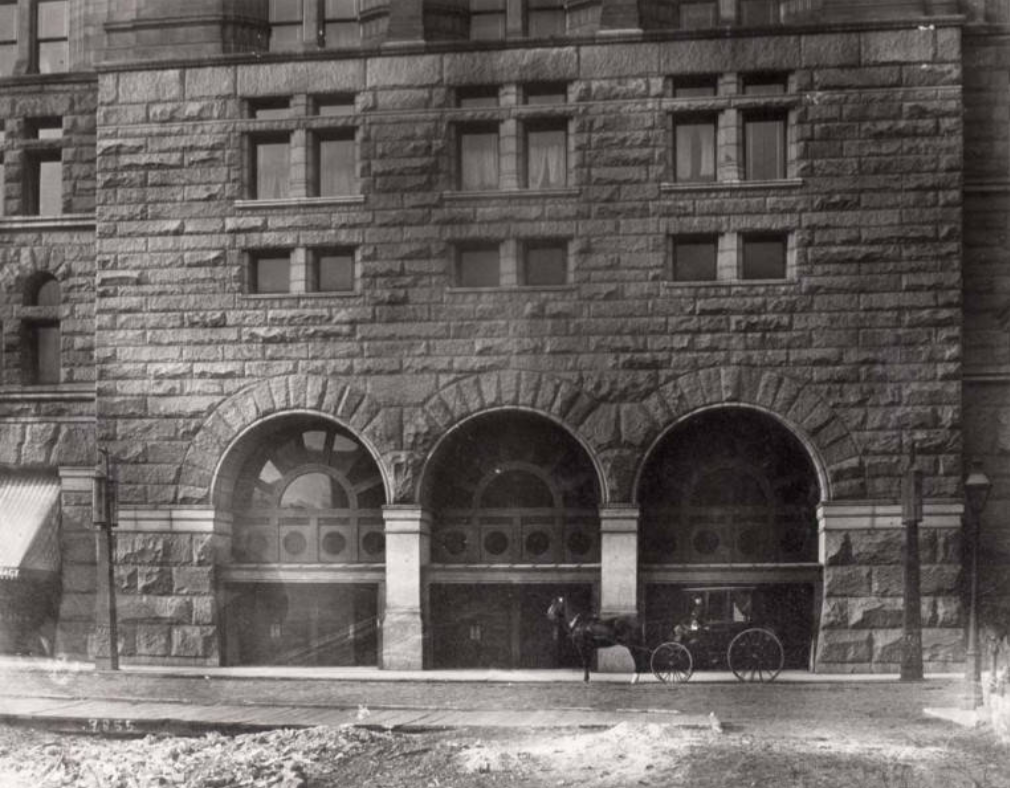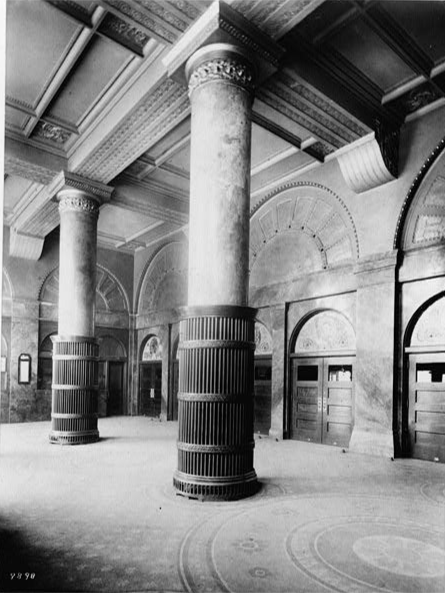
1950-1960
New Arcade & Entrance
In 1952, the Dwight D. Eisenhower Expressway was constructed, which led traffic engineers to widen Congress Parkway (now Ida B. Wells Drive) to accommodate the new traffic. Unfortunately, this meant that the Auditorium Building’s original design had to be compromised for this road construction. The sidewalk that was parallel to the south facing part of the building was removed to build a passageway for pedestrians from Michigan to Wabash Avenue. However, to create space for this new arcade, the restaurants, shops, and bars that were previously homed there had to be gutted.

The theatre’s entrance was also sliced in half, which took away a bisection of the entrance interior and ticket booths. To preserve the remaining entrance, a glass wall was put up. However, the new exterior and arcade was designed with Adler and Sullivan in mind to create a cohesive transition between the inside and outside of the theatre. This space between the glass and lobby is now known as the vestibule which still holds the original ticket booths, wooden doors, floor tile mosaic, chandeliers, stained glass art, pillars, and more. In 2024, The Auditorium refurbished a small portion of its exterior entrance, arcade, and vestibule to create a more welcoming entry point for patrons. 1


A Decade of Silence
Roosevelt University continued to use the Auditorium Building’s old hotel and office spaces as classrooms. However, the theatre part of the Auditorium Building was in no condition to host operas, dances, and music concerts like it used to. The theatre remained dormant for about two decades and much of The Auditorium’s old beauty and glory was masked behind a veil of cobwebs, cracks, and debris.
Fun Facts
In 1942, The Auditorium’s Roosevelt organ (mentioned in Chapter 2) was sold at auction for $1,000 to William H. Barnes who stored it in the basement of First Baptist Church, Evanston. In 1943, the organ was donated to Indiana University with the condition that the university would pay for its restoration and installation. In 1961, the organ suffered fire and water damage, and was disassembled and dispersed after. 2
Citations
- Reports, Staff. “Drama Now Offstage at The Auditorium.” Chicago Tribune, October 6, 1992.
- Petty, Bynum. “Chicago’s Magnificent Auditorium Theatre and Its Roosevelt Organ.” The Tracker 66.1 (2022): 36. Print.
